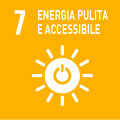- Docente: Giovanni Franceschini
- Crediti formativi: 6
- SSD: ING-IND/32
- Lingua di insegnamento: Inglese
- Modalità didattica: Convenzionale - Lezioni in presenza
- Campus: Bologna
- Corso: Laurea Magistrale in Electric Vehicle Engineering (cod. 5699)
-
dal 16/09/2024 al 19/12/2024
Conoscenze e abilità da conseguire
The course aims to provide a deep knowledge on the vector control of AC electric motors. At first, starting from dynamic equation, a control model on d-q axes of the following AC machines will be obtained: AC and DC Brushless Motor; Induction Motor; Synchronous Reluctance Motor; IPM Motor Using modern simulation methods based on Matlab/Simulink tools participants will learn how to design the main control architecture scheme for torque/velocity and position including the effect of torque disturbance as well.
Contenuti
Electromechanical energy conversion: Energy and Coenergy. Determination of force / torque delivered by an electric actuator.
Operating principle of the DC machine, both the permanent magnet and wound stator construction. Equivalent circuit and dynamic model. Mechanical characteristic, constant torque and constant power operating area.
Overload operation, introduction of the effective torque concept.
Structure of synchronous machines and brushless motors with permanent magnets. Principle of operation of the trapezoidal and sinusoidal brushless motor. Stationary and dynamic model of permanent magnet machines. Fields of application and comparison with the DC drives.
Structure and operating principle of the induction machine. Dynamic model of induction motors. Field Oriented Control Based on Reduced Order Flux Observer.
Structure and operating principle of synchronous reluctance and hybrid machines: SyncRel, PMASM,IPM. Dynamic models and vector control.
Main components of Electrical Drives control chains. Implementation of control: standard regulators and predictive controllers.
Optimal control of electric machines: MTPV and MTPA trajectories.
Testi/Bibliografia
Lecture notes
A. E. Fitzgerald , C. Jr. Kingsley , A. Kusko: "Electric machinery", McGraw-Hill Education, 2012.
Metodi didattici
Teaching involves theoretical frontal lessons carried out with the help of multimedia systems.
The teaching material will be available at the end of each lesson on Virtuale (https://virtuale.unibo.it).
The mathematical models introduced will be used for numerical modeling and computer simulation by Matlab/Simulink/Simscape
Modalità di verifica e valutazione dell'apprendimento
The examination is composed of a practical project and an oral discussion:
1: Practical project comprises drafting a technical report on the sizing, design and simulation of an electrical drive torque/speed control. The deliverable report on the activity carried out, including simulation results will be graded.
2: An oral discussion examination on the course topics, aimed at verifying the knowledge of the course content.
To successfully pass the examination, both tests must be sufficient. The final grade of the examination is determined as follows: 60% from the evaluation of the practical test report and 40% from the oral discussion.
Strumenti a supporto della didattica
Matlab+Simulink
Orario di ricevimento
Consulta il sito web di Giovanni Franceschini
SDGs




L'insegnamento contribuisce al perseguimento degli Obiettivi di Sviluppo Sostenibile dell'Agenda 2030 dell'ONU.
